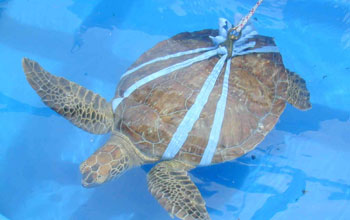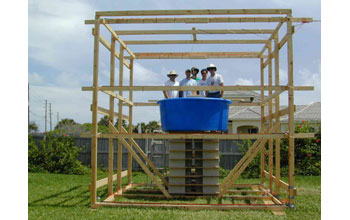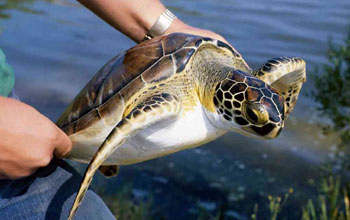All Images
Research News
Geomagnetic Landmarks Give Turtles Sense of Where They Are, Where to Go

The turtles were placed into cloth harnesses and tethered to limit their travel and to enable researchers to monitor the direction of their swimming. "Turtles could view the sky, but were restricted to the center of the coil where the magnetic field was uniform," the researchers reported.
Credit: Ken Lohmann, University of North Carolina, Chapel Hill

A wooden frame, with wires wrapped tightly around it, surrounds the pool where the turtles swam. The coil system allows researchers to control the ambient magnetic field in which each turtle swam.
Credit: Ken Lohmann, University of North Carolina, Chapel Hill

While newly hatched sea turtles derive a rudimentary sense of direction from the magnetic field around them, juvenile green turtles at several years of age, such as this one, can register geomagnetic landmarks, allowing them to compile navigational maps and determine their location. How turtles detect magnetic fields is not known.
Credit: University of Central Florida Marine Turtle Research


